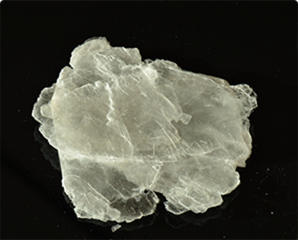natural mica vs synthetic mica
Natural Mica vs. Synthetic Mica A Comprehensive Comparison
Mica, a silicate mineral, has been a staple in various industries for centuries due to its unique properties, such as dielectric strength, thermal stability, and excellent insulation capabilities. When discussing mica, two primary types often emerge natural mica and synthetic mica. Both materials have their respective advantages and applications, making it important to understand their differences and potential uses.
Natural Mica Characteristics and Applications
Natural mica is sourced from the earth, extracted primarily from countries like India, China, and Madagascar. It exists in various forms, including muscovite (white mica) and phlogopite (brown mica), and is celebrated for its cellular structure that provides a shimmering quality. This natural beauty makes it a popular choice in cosmetics, especially in products like eyeshadows, highlighters, and blushes, where the sparkle enhances the visual appeal.
Moreover, natural mica is often favored in industries such as electronics, construction, and automotive, where it serves as an essential component in insulation materials and as a filler in paints, plastics, and rubber. Its thermal resistance and ability to withstand high temperatures render it invaluable for applications requiring durability and stability.
However, the mining of natural mica has raised ethical concerns. Reports of child labor and unsafe working conditions in some mica-producing regions have sparked a global call for more sustainable and ethical sourcing practices. As a result, some companies are looking towards synthetic alternatives to alleviate these issues.
Synthetic Mica Characteristics and Applications
natural mica vs synthetic mica

Synthetic mica is produced in a controlled laboratory environment, replicating the crystal structure of natural mica. This process allows manufacturers to create a product that mimics the properties of natural mica while avoiding some of the ethical dilemmas. In cosmetics, synthetic mica offers many of the same benefits, providing shimmer and luminosity without the associated ethical concerns of mining.
Additionally, synthetic mica can be engineered to enhance certain properties. For example, it can be designed to be more uniform in size and color, leading to a more consistent appearance in cosmetic products. In industries such as electronics and telecommunications, synthetic mica is increasingly used due to its reliability and purity, providing excellent dielectric properties and thermal insulation.
Though synthetic mica may provide certain advantages, some purists argue that it lacks the unique beauty and character of natural mica. The aesthetic differences, particularly in cosmetics, can impact consumer preference, with many still favoring the genuine qualities of natural mica.
Conclusion Choosing Between Natural and Synthetic Mica
When deciding between natural and synthetic mica, it is essential to weigh the specific needs of the application and consider factors such as ethical sourcing, cost, and desired properties. Natural mica excels in aesthetic appeal and has a long-standing reputation in various industries, yet the ethical considerations cannot be overlooked. On the other hand, synthetic mica presents a responsible alternative without compromising on functionality, particularly in applications where consistency and purity are crucial.
As consumers become more socially conscious, the demand for ethically sourced materials is on the rise. The mica industry is at a crossroads, and both natural and synthetic mica offer unique benefits that cater to diverse market needs. By understanding the nuances of each type, manufacturers and consumers alike can make informed choices that align with their values and requirements while contributing to a more sustainable future.
-
Transforming Surfaces with Mica-Enhanced Paints in Coatings and DecorationNewsJul.02,2025
-
The Ultimate Guide to Mica-Based Luminous Colors with Pearlescent PigmentNewsJul.02,2025
-
The Critical Role of Mica in Industrial Applications in Welding and Oil FieldsNewsJul.02,2025
-
Revolutionizing Automotive Aesthetics with Modified Plastics Pearlescent PigmentsNewsJul.02,2025
-
The Secret with Mica Powder for Cosmetics Behind Radiant, Natural MakeupNewsJul.02,2025
-
Enhancing Performance in Polymer Applications with Mica Powder for RubberNewsJul.02,2025
Products categories









